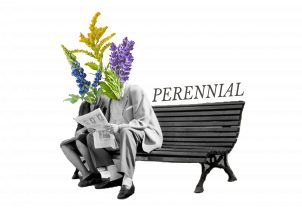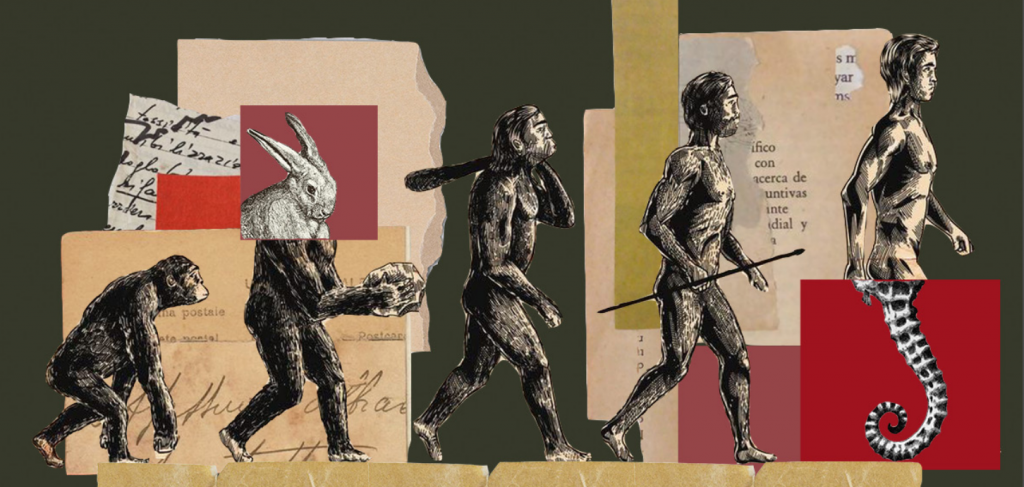by Khaled Alqahtani
Evolution is commonly thought to be a biological process that requires millennia to take place. And while this may hold true, we actually have witnessed the evolution of different species in our lifetimes.
Whether it is the color of a mouse’s fur or the shape of a finch’s beak, different traits evolve depending on the conditions shaping the species’ environments. Human activities have shaped and shifted those environmental conditions, which can be seen in the effects of climate change. This has led to the evolution of traits that may impact and harm the vitality of different species in the future.
Dr. Caroline Williams, an associate professor at the Integrative Biology department at the University of California, Berkeley, studies the evolution of metabolic physiology in response to novel climates that are emerging because of climate change. As an expert in evolutionary biology, and a science communicator, she delves in this interview into the public’s perception of climate change and evolution, what we can do to combat and reverse the damage that has been done, and the need for hope to move forward.
Non-experts generally think that evolution is a very long process, when it can actually be witnessed within one’s lifetime. How would you describe this general conception?
“It’s true that a lot of what we know about evolution is on the macro-evolutionary scale from studying fossils and reconstructing long term patterns of evolutionary change. But actually, evolution is happening every minute and every hour, even inside our own bodies. When you think about things like the evolution of antibiotic resistant bacteria all the way up to insects adapting over generations to changes in their environment—these changes are happening within our lifetimes in front of our very eyes. So I think it’s a continuum from micro evolution, all the way up to macro evolution.”
As a researcher whose work involves the study of evolution, how would you simply define it?
“Evolution is the change in gene frequencies over time. And a lot of evolution happens due to natural selection, where genetic variants that improve fitness rise in frequency.”
In this case, how do environmental conditions shape an organism’s evolutionary trajectory?
“The environmental conditions that an organism experiences will impact their fitness and their ability to grow and survive and pass on their genes in that environment. So, the traits that are advantageous in a given environment will tend to increase in frequency, while adaptation or traits that are disfavored will decrease.”
“I think we sometimes think of environmental changes being sort of unidirectional and going in one particular direction. However, environments are fluctuating on scales from seconds and minutes to days and hours and to weeks and years. All of these timescales are interacting. And often fitness is fluctuating on different timescales—the traits that make an organism more fit will change through the day and through the seasons, and then through longer timescales. All of these layers of environmental variation sort of impact their response to selection.”
As you’ve mentioned, fluctuations in environmental conditions are constantly happening, either on a daily basis, or on a larger evolutionary timescale. For example, we’ve seen fluctuations in temperatures throughout history. And as a result, losses and gains of certain traits. But those changes happened naturally. How would you say human-induced effects contributed to those environmental changes and fluctuations?
“If we’re talking about climate, specifically the Earth’s climate, it has always been in flux. So, we’ve got these very long-term climate fluctuations. But during the entire period of human evolution, the Earth has been in a very mild state—our entire evolutionary history has taken place in a very stable period of temperatures. And if you look at those temperatures, you’ll notice they have started to increase after the Industrial Revolution, and it looks like this classic hockey stick. We’re now seeing that the average temperature conditions are steeply climbing outside of the range that has existed during the entire human evolution. And it’s pushing organisms to change and adapt their ecology and evolution, much faster than has ever happened before. It’s one of the fastest rates of change that we’ve ever seen.”
What is an organism that has evolved due to this rapid change and unprecedented heat in temperature as a result of human-induced effects?
“We’re seeing that organisms that live inside cities are adapted to warmer conditions. Cities tend to be hotter than rural areas because of the high amount of concrete and non-permeable surfaces. So, you get this urban heat island effect. Researchers have studied thermal tolerances of organisms that live across the boundaries of cities and found that thermal tolerances are higher inside the city than just a few kilometers outside the city, suggesting that there can be rapid evolution of thermal tolerance in response to anthropogenic changes in climate.”
Does this rapid evolution of adaptations impact the species? If so, can this impact be harmful?
“I think that it’s hard to answer that on a species-by-species basis because we can’t really say whether a given change is good or bad. What we’re thinking about is the ability to pass on the genes from one generation to another. If it makes the organism more fit for its new environment, which is human altered, then that’s good, right? But it may also reduce fitness in an altered environment. So, I think we need to be really careful of what we mean when we say as a change, good or harmful because it’s a very specific environmental context that we’re applying that judgment to. On the whole, what I’d say is that we’re seeing a decline in specialist species that have a narrow niche, and that we’re seeing an increase in generalist species, which often tend to be weedy or pest species. And the result is a more homogenous, globalized sort of environment, where we’ve got fewer high abundance species. In some cases, that can lead to less resilient ecosystems. And it can also reduce other aspects of nature that we care about because a lot of people, like myself, really value biodiversity and all the special unique species and feel very sad about the loss of those species.”
“There are a lot of ways to say what’s good and what’s bad. I think that we’re changing the world, and the biosphere has a great capacity to adapt. And we’re also changing things very fast. Eventually, it may become difficult for us to exist in this new reality that we’re helping to create because of the rapid speed of change. And that’s something I think we need to think carefully about as we choose our course of action.”
What would you think could be potential individual or larger-scale efforts that can at least attempt to reverse the damage that has been done on various environmental conditions worldwide?
“I think that the most important thing is that we need to rid ourselves of our reliance on fossil fuels. And not only on fossil fuels, but also on just using energy in such a profligate manner. So we need to all work to reduce our footprint on the Earth, reduce the amount of plastic we’re using, and reduce the amount of energy and fossil fuels.”
“That’s going to mean different things to different people. For some people, it may mean switching their diet. For some people, it may mean putting on more clothing instead of cranking up the air conditioner. We need to protect our remaining wilderness areas by conserving wilderness. But that’s also a complex issue: who are we conserving it for? And who are we taking it from? In order to do that, issues of racial justice and equity have to be considered really carefully. I think that educating ourselves individually about conservation, justice, and equity are some of the most important steps that we can take.”
As a researcher who also worked in science communication, how would you say we can make concepts, such as climate change and conservation, accessible to spread awareness of such devastating effects?
“I think that people need a message of hope, and not of doom and gloom. Although we often deal with the doom and gloom as scientists day to day in our research because we see the huge deleterious impacts that climate change is having, we need to find a way to motivate people. And hope is a much more powerful motivator than fear. And we need to connect it to people’s everyday lives so that it becomes something so that people see themselves as part of the natural world, not standing over and above. In my own teaching, I try to bring in examples that people can relate to. And I want to work more towards bringing the local community involved in the research—doing outreach to schools and making community connections. So it starts in the classroom, where it makes it a learning community who works together to solve problems and then takes those ripples outwards into the community beyond the classroom.”

